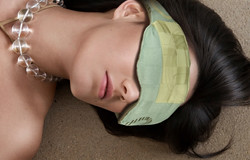So let’s start with some of the basics over the next few weeks. That way you will have a bit of knowledge, and we all know that knowledge builds confidence in oneself.
Symmetry
Most people understand symmetry and this is the easiest one to do. This is when everything is equal and balanced on each side of an imaginary line. The things we look at here are size, number of items, color and shapes. When you add up the total number of objects on each side of the line, the sum will be an even number.
Here is an example of symmetry:

Imagine that the objects above are pictures and the line is a partial wall between 2 rooms. One can stand looking at the partial wall and see all the pictures at the same time. Notice how balanced it feels to your eye. There are the same number of pictures on each side of the partial wall. The pictures are the same shape and size. The pictures are also at the same height as another picture on the other side.
Asymmetry is the opposite of symmetry. Everything is unequal and unbalanced on each side of an imaginary line. We still look at size, number of items, color and shapes. They just take on a new meaning here.
Here is an example of asymmetry:

Same scenario here as the last one, imagine that the objects above are pictures and the line is a partial wall between 2 rooms. Stand looking at the partial wall and see all the pictures at the same time. Notice how it still feels balanced to your eye, even though there are not the same number of pictures on each side of the partial wall and the pictures are not the same shape and size. This is where we get into the term ‘weight of an object’. The weight of an object is how heavy or light your eye perceives it to be. The square on the right is perceived to be heavy because of it’s overall size. Whereas the weight of one of the individual shapes on the left is perceived to be light because of it’s overall size. When we place the 3 shapes on the left together, your eye perceives them to be heavier because of their proximity to each other. The eye will perceive them as a set, therefore more like one object. Now let me show you something else that should help you understand this term.

I have redrawn the square(on the right side of the line) in gray over the 3 shapes (on the left side of the line). Notice how the square is actually the same size as the 3 shapes together? The eye blends the 3 shapes together into one and perceives the weight to be the blended size. This is why your eye will view the asymmetry as pleasing and balanced.
div>
Asymmetrical Design Schemes for Wall Hangings -- powered by ExpertVillage.com
Here is a great video that shows Symmetrical Design Schemes for Wall Hangings by Craig Hale.
Symmetrical Design Schemes for Wall Hangings -- powered by ExpertVillage.com









0 Response to "Design Ideas Wednesday"
Post a Comment